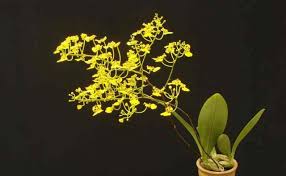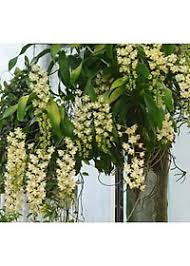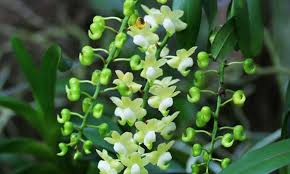
Dancing Lady Orchids, scientifically known as *Oncidium*, are a stunning addition to any orchid collection. Known for their vibrant colors and unique flower shapes that resemble a graceful dancer, these orchids have gained immense popularity among plant enthusiasts and collectors. However, with their rising demand, the market has seen an influx of counterfeit or inferior quality flowers. To ensure you invest in authentic Dancing Lady Orchids, it’s crucial to know how to distinguish genuine specimens from imitations. This comprehensive guide will provide you with detailed insights into identifying authentic *Oncidium* orchids and tips to avoid purchasing fake ones.
## Understanding Dancing Lady Orchids
### 1. Botanical Characteristics
Dancing Lady Orchids belong to the *Oncidium* genus within the Orchidaceae family. Here are some essential characteristics to recognize:
– **Flower Structure**: The flowers of *Oncidium* are small and delicate, typically arranged in sprays. They have unique shapes that can resemble a dancing figure, with the labellum often appearing as a ‘skirt’ and the petals mimicking arms.
– **Color Variations**: Genuine Dancing Lady Orchids come in various colors, including bright yellow, orange, white, and maroon. Some species and hybrids exhibit spots or stripes, enhancing their visual appeal.
– **Growth Habit**: These orchids are primarily epiphytic, meaning they grow on other plants or trees rather than in soil. Their pseudobulbs store water, and their leaves are often long and narrow.
### 2. Common Species and Hybrids
Familiarizing yourself with the most common species and hybrids of Dancing Lady Orchids can help you identify genuine specimens:
– **Oncidium altissimum**: Known for its tall growth habit and long-lasting flowers, this species features bright yellow blooms with a delightful fragrance.
– **Oncidium Sharry Baby**: A popular hybrid characterized by its deep maroon flowers with yellow markings, this variety is known for its sweet scent.
– **Oncidium Twinkle**: This hybrid features smaller flowers and is available in white and yellow, making it a favorite for compact spaces.
Understanding these species will allow you to recognize their unique traits and avoid confusion with other orchid varieties.
## Recognizing Authentic Dancing Lady Orchids
### 1. Visual Inspection
Conducting a thorough visual inspection is one of the most effective ways to identify genuine *Oncidium* orchids. Pay attention to the following details:
– **Flower Shape and Size**: Authentic Dancing Lady Orchids have distinctive flower shapes that should be consistent with known varieties. Measure the size of the blooms, as genuine orchids typically range from 1 to 3 inches in diameter.
– **Color Integrity**: Examine the coloration of the flowers. Genuine *Oncidium* orchids have vibrant, well-defined colors. Avoid specimens with faded or uneven coloring, as this may indicate poor quality or artificial flowers.
– **Petal Texture**: The petals of genuine *Oncidium* orchids should be firm and resilient, with a waxy sheen. Fake flowers may have a plastic or overly glossy appearance.
### 2. Stem and Leaf Characteristics
In addition to flowers, inspecting the stem and leaves can provide further insights:
– **Stem Thickness**: Authentic *Oncidium* orchids typically have sturdy, upright stems that can support the flower spikes. Thin or weak stems may indicate a lower quality plant or an artificial flower.
– **Leaf Shape and Size**: Examine the leaves for their typical long and narrow shape. They should be green, firm, and free from blemishes or discoloration. Yellowing or wilting leaves can signify a health issue.
– **Pseudobulbs**: Genuine *Oncidium* orchids possess pseudobulbs that store water. These structures should be plump and healthy-looking. Absence or shriveling of pseudobulbs may indicate a counterfeit or unhealthy plant.
### 3. Root System Examination
The root system is a crucial aspect of identifying genuine orchids:
– **Healthy Roots**: Examine the roots by gently removing the orchid from its pot. Authentic *Oncidium* orchids will have a dense network of healthy, white roots. Dark or mushy roots can signify rot, indicating poor health or quality.
– **Growing Medium**: Genuine orchids are typically planted in a specific growing medium, such as bark or moss, to mimic their natural epiphytic environment. If the plant is in standard potting soil, it may not be a true *Oncidium*.
### 4. Fragrance
Many authentic *Oncidium* orchids have a distinct, pleasant fragrance:
– **Scent Test**: Gently smell the flowers; genuine *Oncidium* varieties, especially hybrids like *Oncidium Sharry Baby*, emit a delightful aroma. If there’s no scent or an artificial smell, it may be an indication of a counterfeit flower.
## Documentation and Labels
### 1. Authenticity Labels
When purchasing *Oncidium* orchids, look for proper labeling and documentation:
– **Registered Labels**: Reputable sellers will provide a label indicating the species or hybrid name. Labels should also include the nursery or grower’s information.
– **Certificates of Authenticity**: Some sellers may offer certificates confirming the authenticity of their orchids. This is particularly important for rare or hybrid varieties.
### 2. Research the Seller
Before making a purchase, research the seller’s reputation:
– **Reputable Nurseries**: Purchase orchids from established nurseries or specialized orchid growers known for their quality products. Check for reviews and customer testimonials online.
– **Local Orchid Societies**: Joining local orchid societies can provide you with trusted sources and recommendations for reputable sellers.
## Common Counterfeit Indicators
### 1. Unusually Low Prices
Be wary of prices that seem too good to be true:
– **Market Pricing**: Genuine *Oncidium* orchids, especially rare varieties, often have a higher price due to their quality and care required in cultivation. If a seller offers significantly lower prices, it may indicate counterfeit or unhealthy plants.
### 2. Lack of Information
Counterfeit flowers often come without adequate information:
– **Incomplete Labels**: If the flower lacks proper labeling or details about its care, it may be an indication of a low-quality or fake product.
– **Unverified Sources**: Avoid purchasing from vendors with little to no online presence or reviews. Trustworthy sellers usually have well-documented histories.
### 3. Poor Quality Control
Counterfeit *Oncidium* orchids may exhibit noticeable flaws:
– **Inconsistent Features**: Fake flowers may have inconsistent petal shapes or colors that do not match the known characteristics of authentic *Oncidium* orchids.
– **Synthetic Materials**: If the flowers feel overly rigid or plastic-like, it may indicate that they are artificial rather than genuine orchids.
## Care and Maintenance of Genuine Dancing Lady Orchids
Once you have successfully identified a genuine *Oncidium* orchid, proper care is essential to ensure its longevity:
### 1. Watering Practices
– **Watering Schedule**: Water your *Oncidium* orchid when the top inch of the growing medium feels dry. Ensure the pot has drainage holes to prevent water accumulation.
– **Water Quality**: Use distilled or rainwater whenever possible, as tap water can contain chemicals harmful to orchids.
### 2. Light Requirements
– **Light Levels**: *Oncidium* orchids thrive in bright, indirect light. Too much direct sunlight can scorch the leaves, while too little can hinder blooming.
– **Window Placement**: Place your orchids near east or west-facing windows for optimal light exposure.
### 3. Fertilization
– **Balanced Fertilizer**: Use a balanced orchid fertilizer every 4-6 weeks during the growing season. Follow the package instructions to avoid over-fertilization.
– **Organic Alternatives**: Consider using organic fertilizers, such as fish emulsion or seaweed extracts, to provide nutrients without chemical additives.
### 4. Repotting
– **Timing**: Repot your *Oncidium* orchids every 1-2 years or when they outgrow their container. Choose a fresh growing medium to promote healthy root development.
– **Container Selection**: Use pots with drainage holes and consider transparent pots to monitor root health.
## Conclusion: Ensuring Authenticity in Your Orchid Collection
Identifying genuine Dancing Lady Orchids requires careful attention to detail and a good understanding of their unique characteristics. By conducting thorough inspections, researching reputable sellers, and being aware of common counterfeit indicators, you can ensure that you purchase authentic *Oncidium* orchids for your collection.
Proper care and maintenance will help you enjoy these exquisite flowers to their fullest potential. Whether you are a seasoned orchid enthusiast or a beginner, investing in genuine *Oncidium* orchids will reward you with their beauty and elegance for years to come. Embrace the joy of cultivating these captivating flowers and enhance your living space with their enchanting presence.


